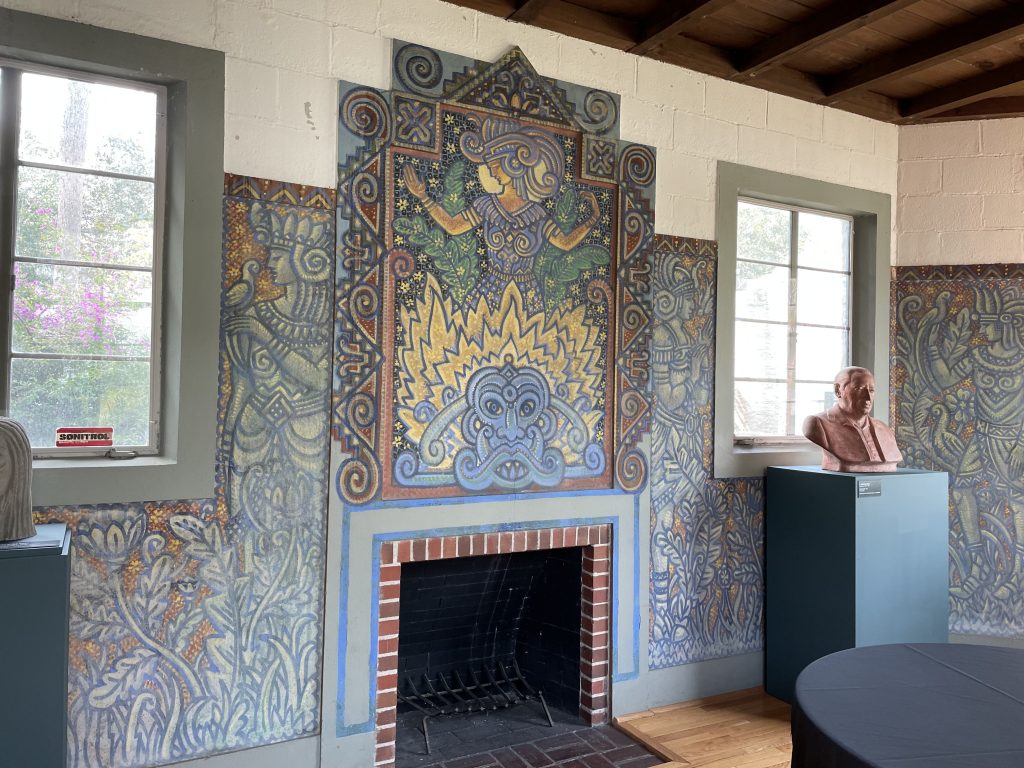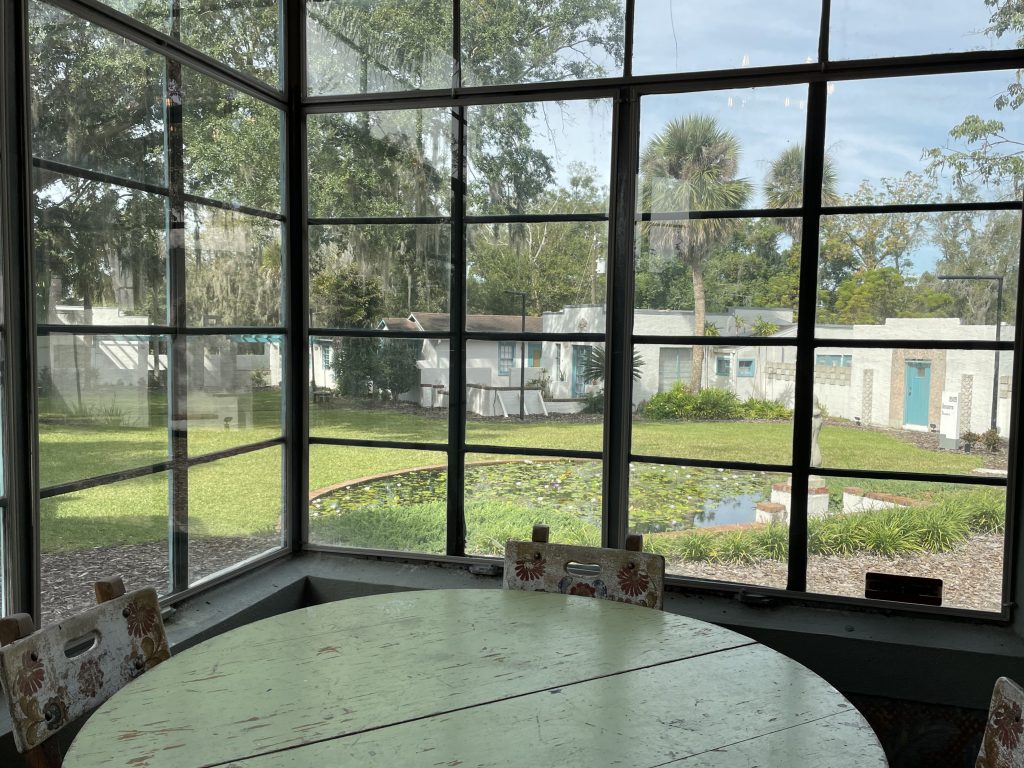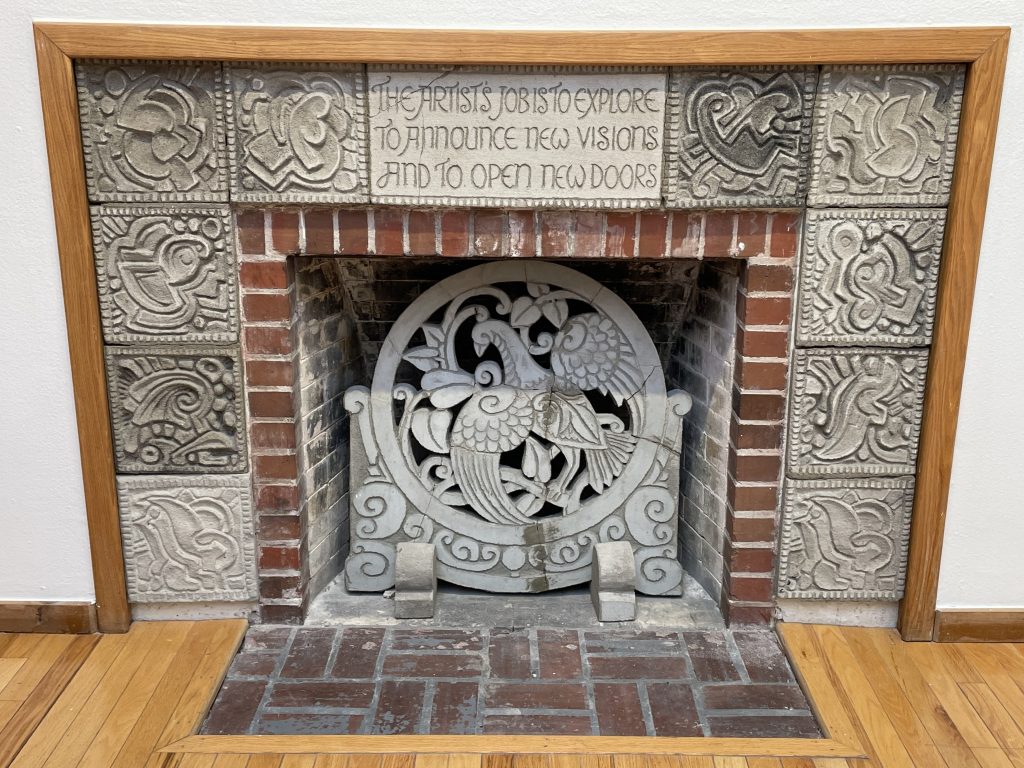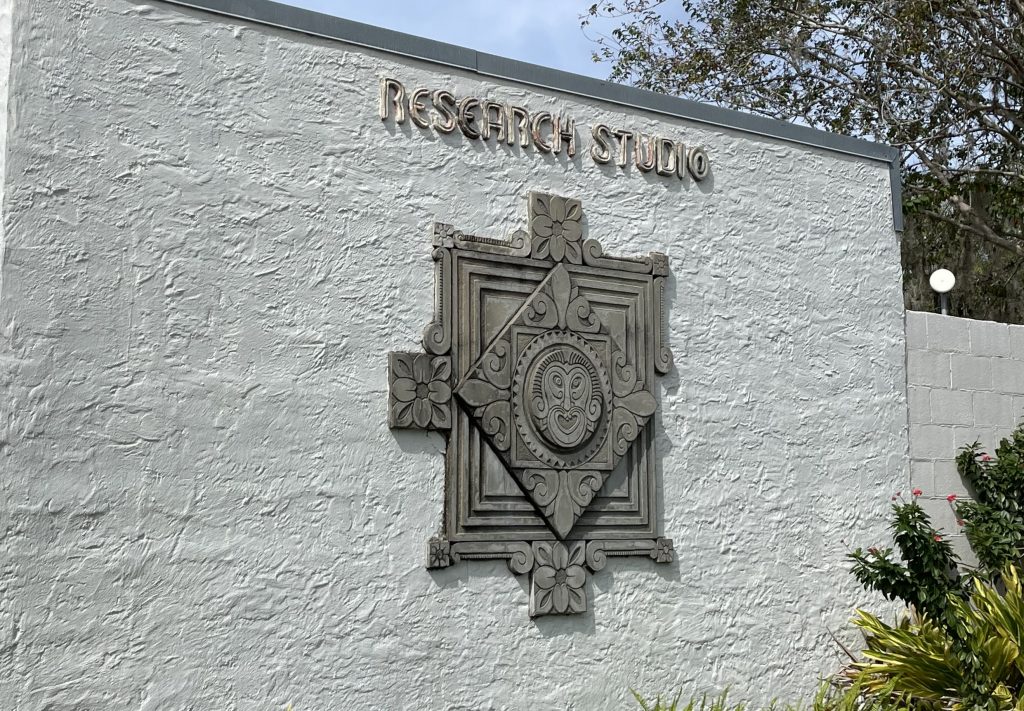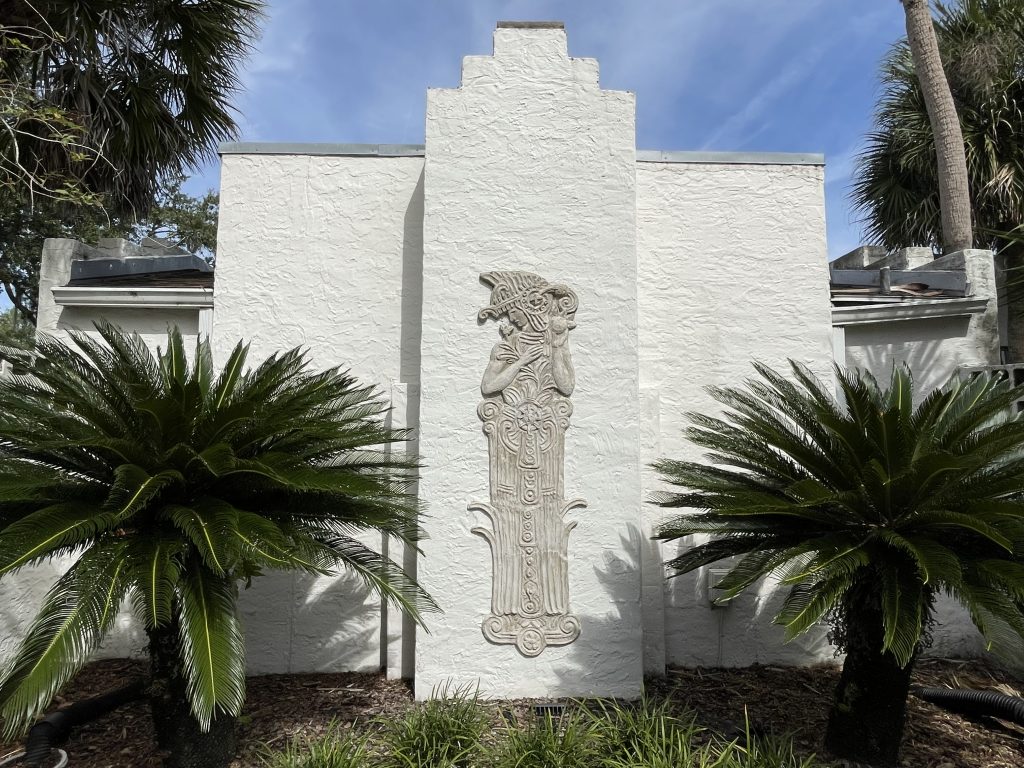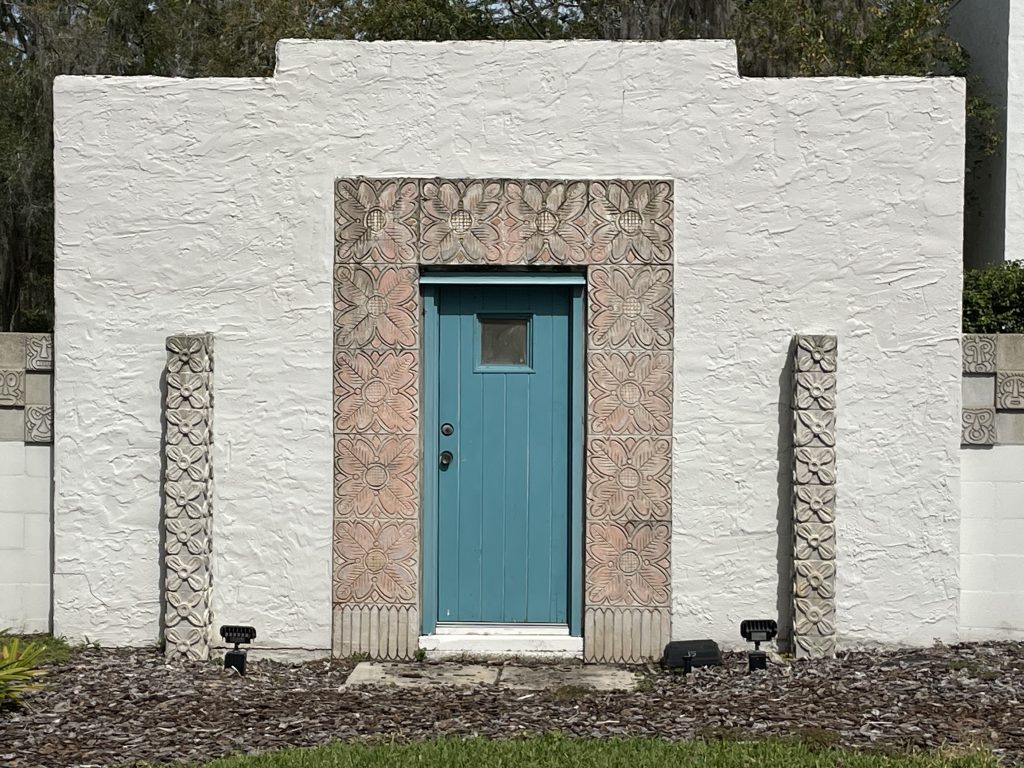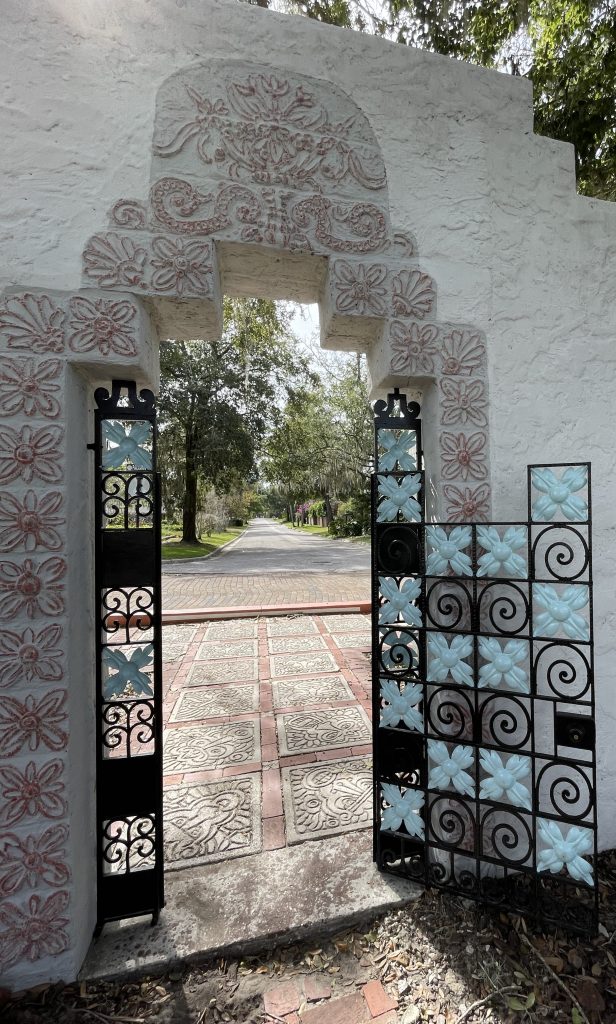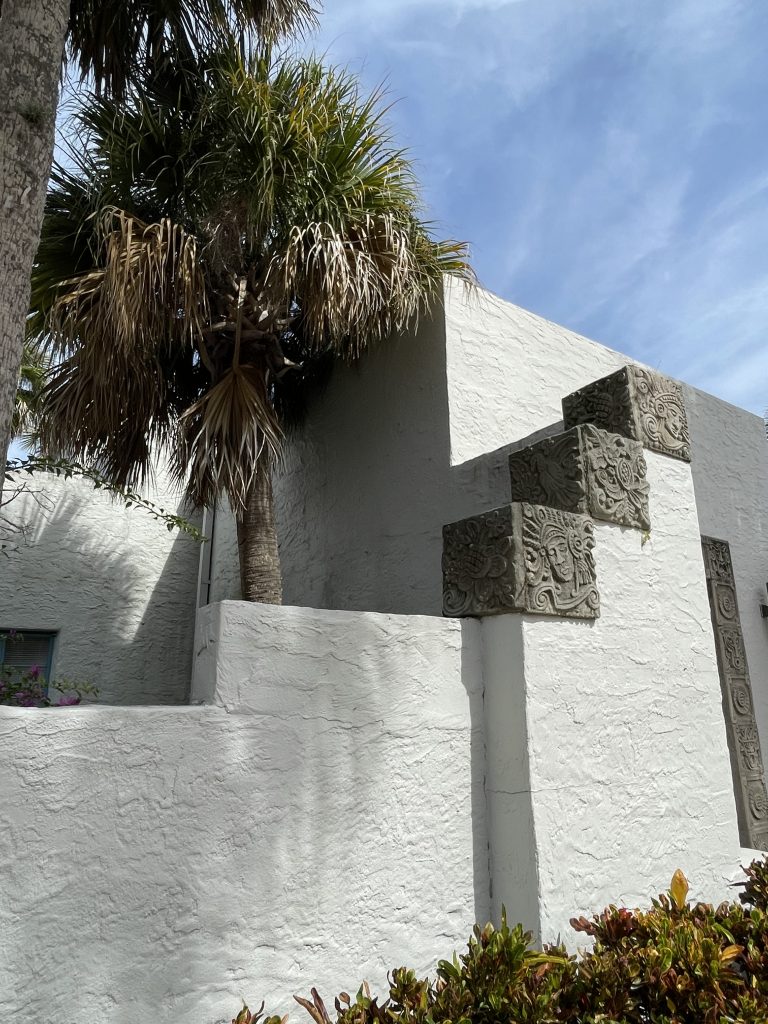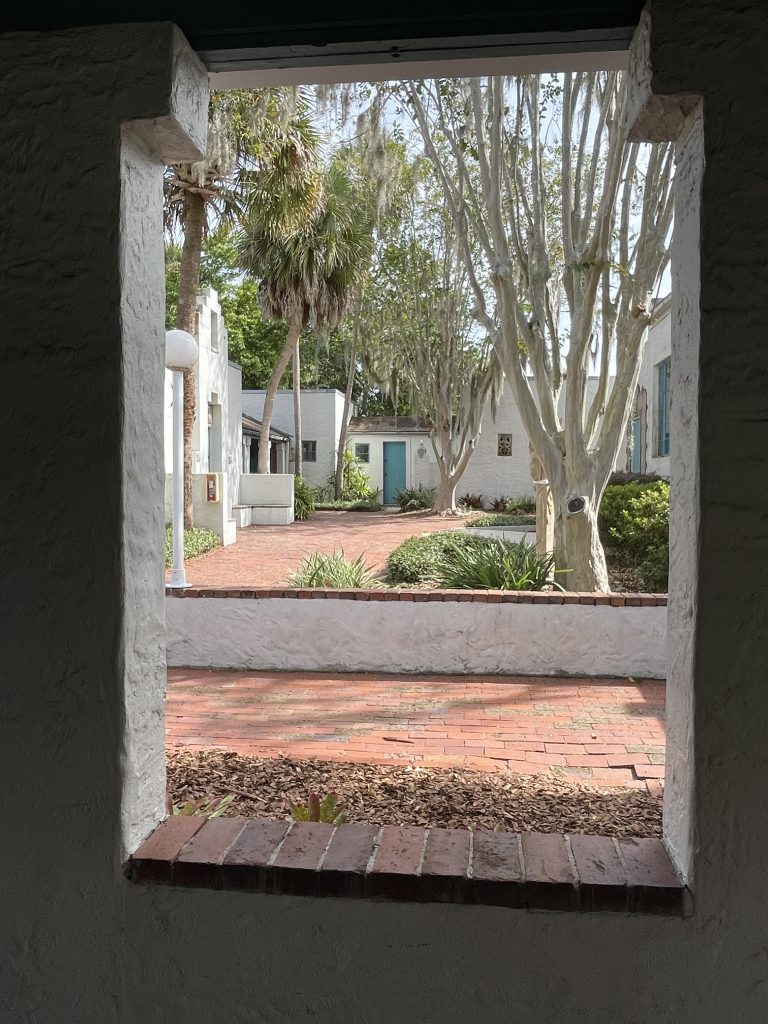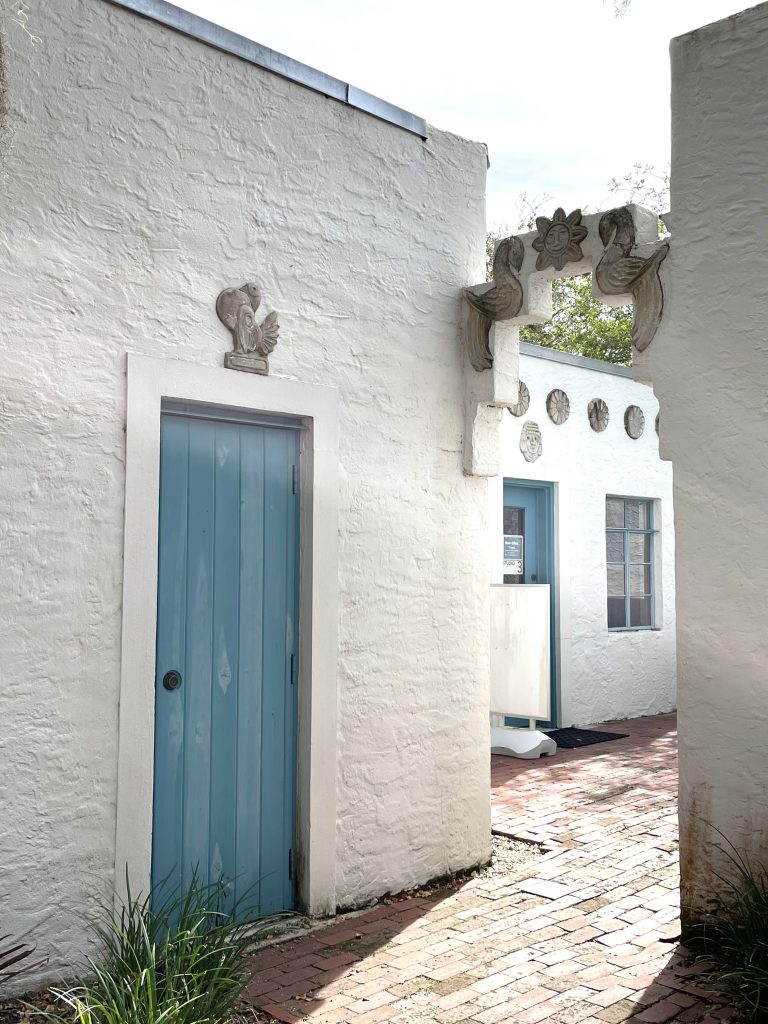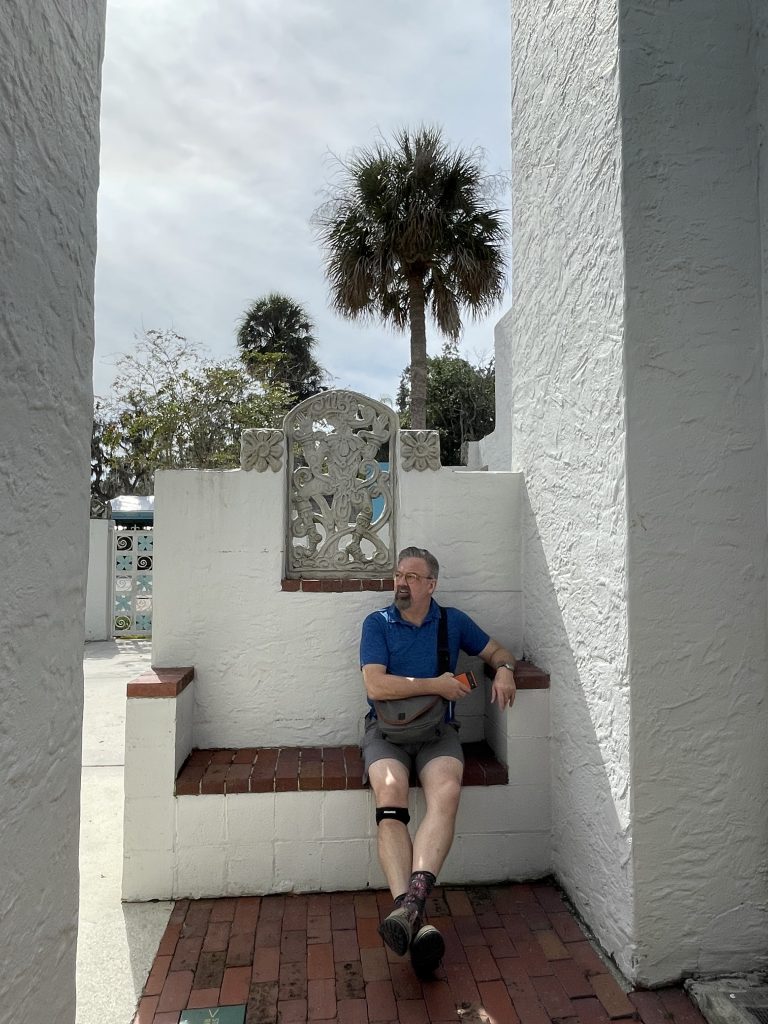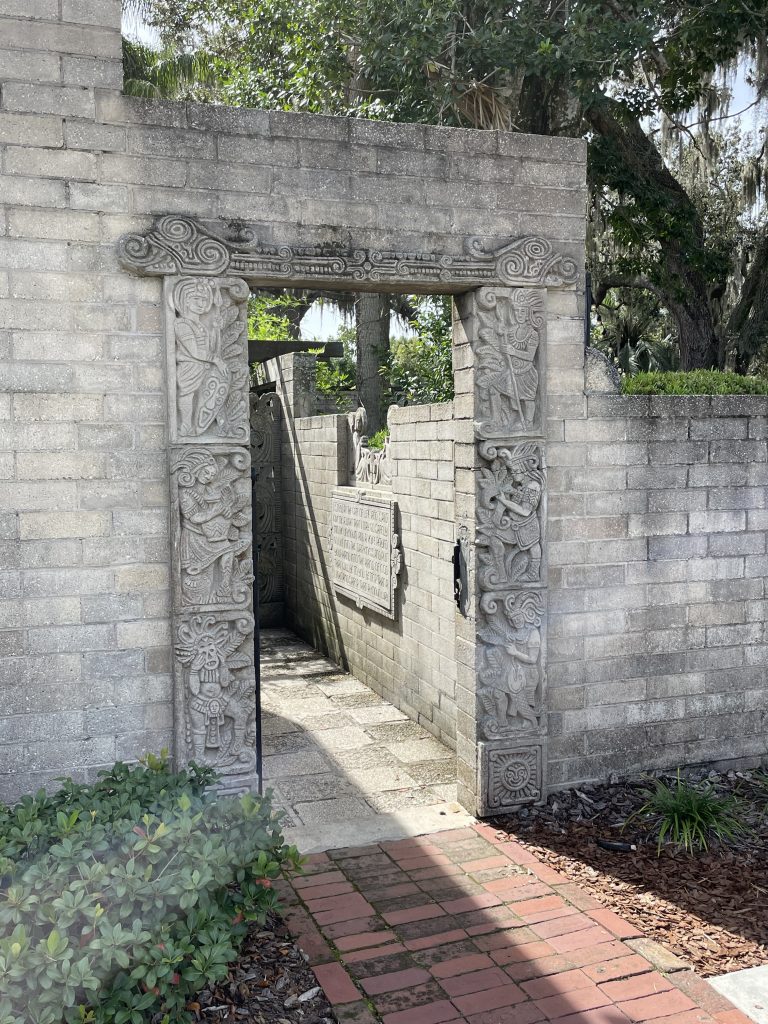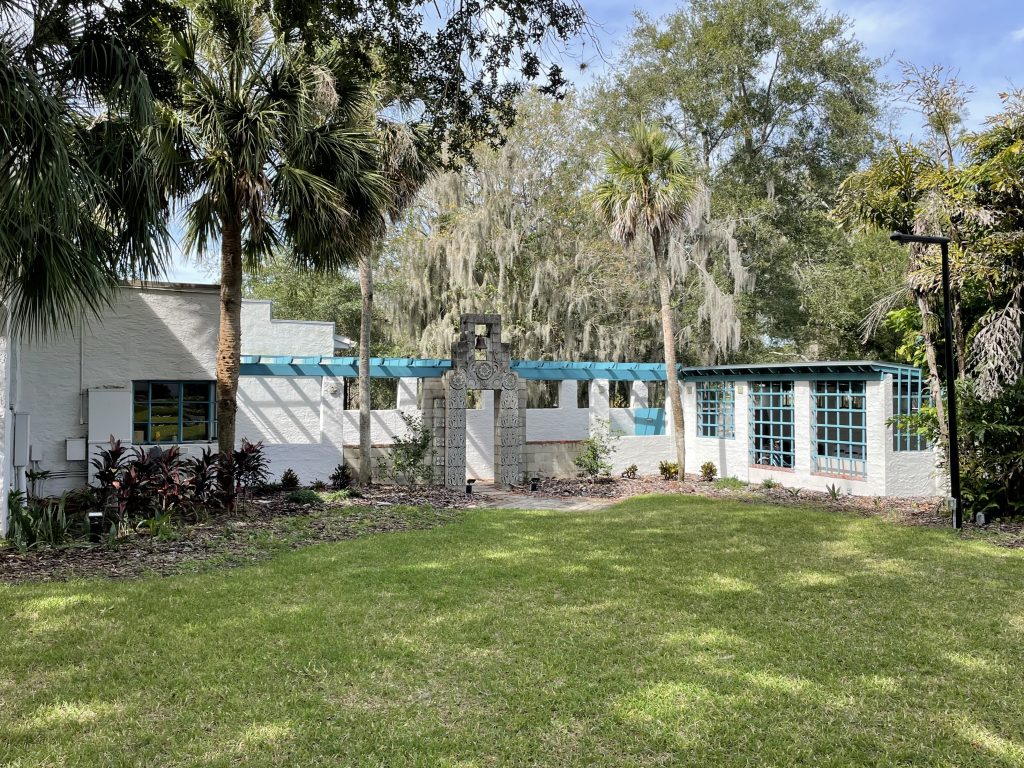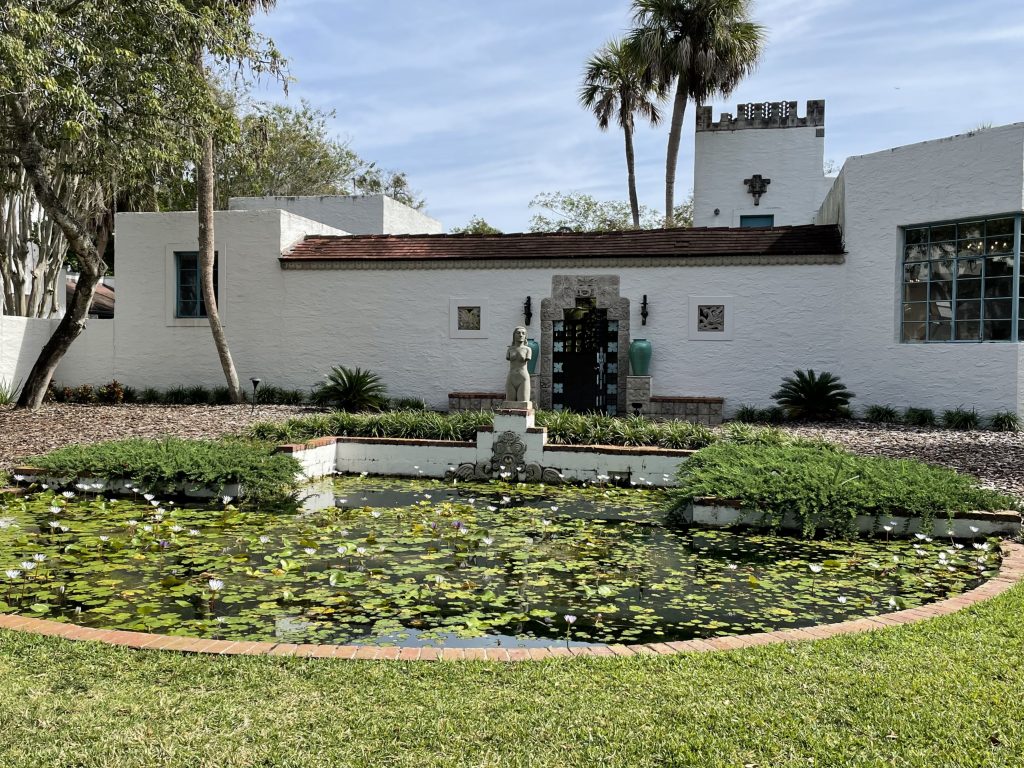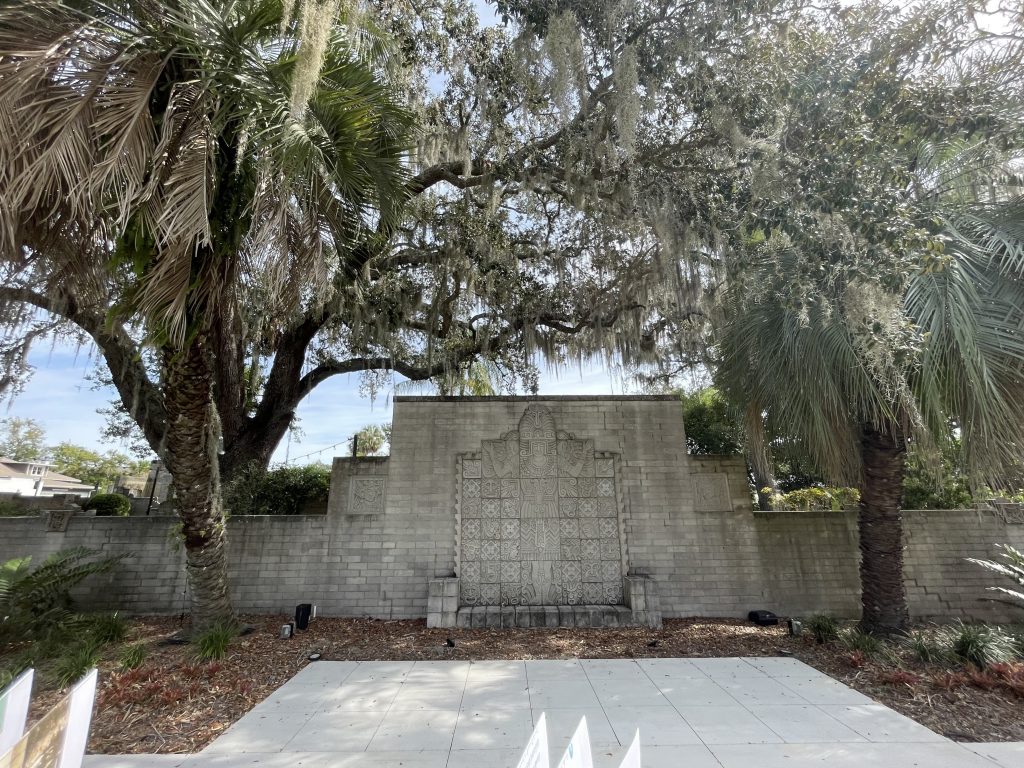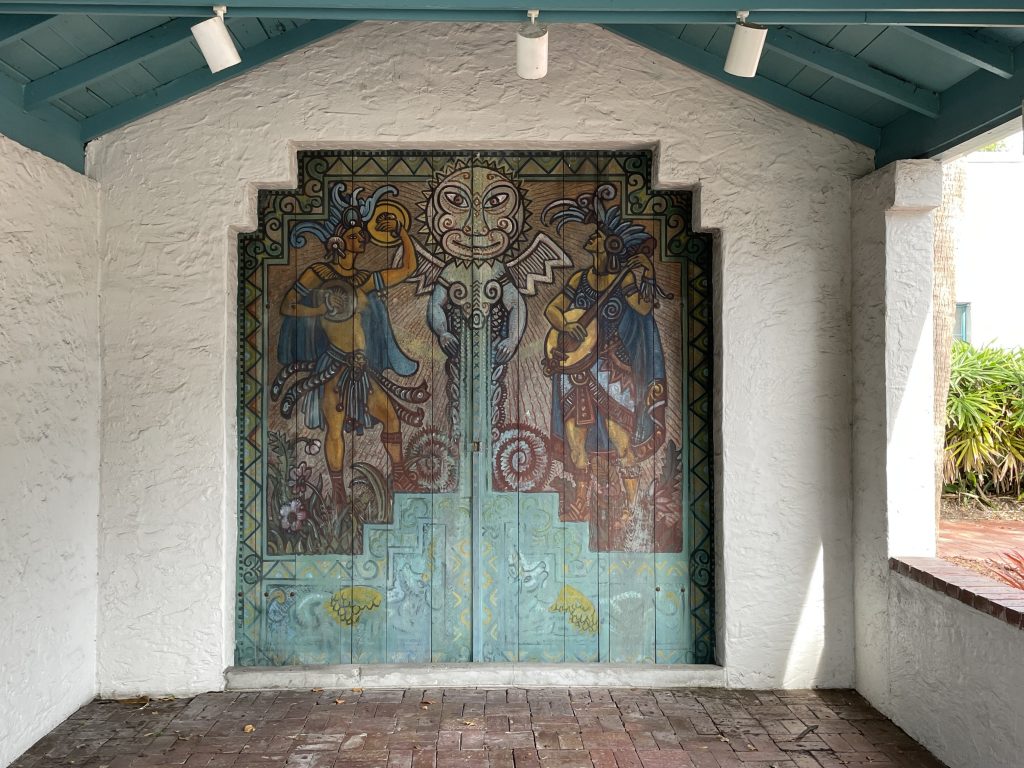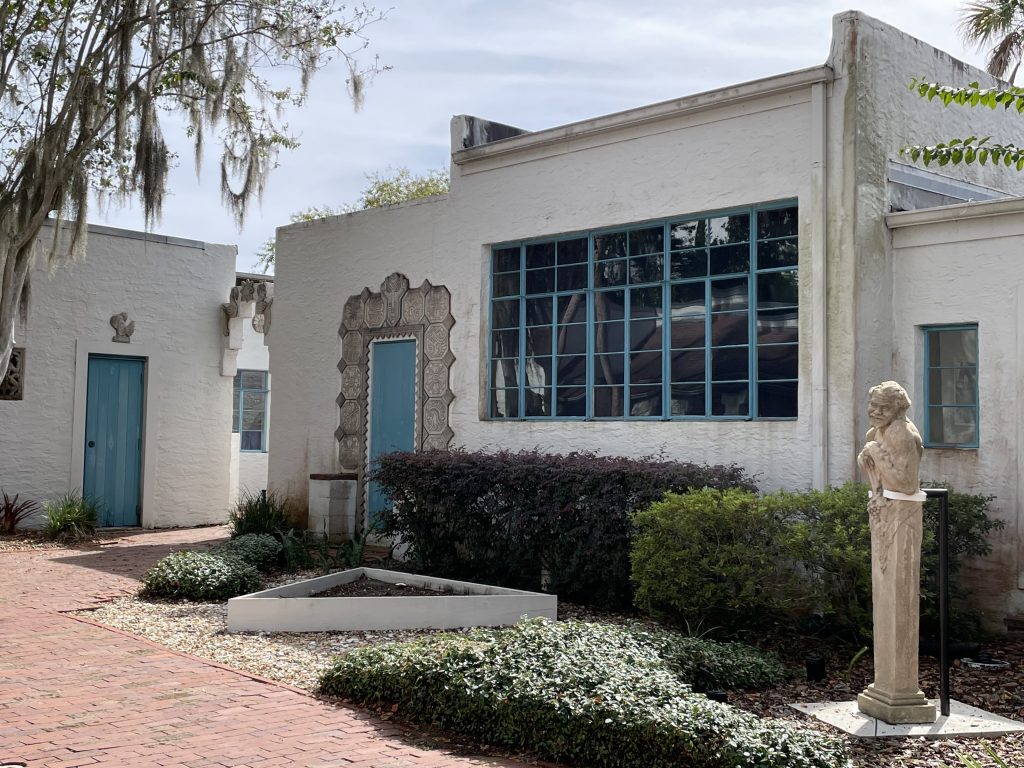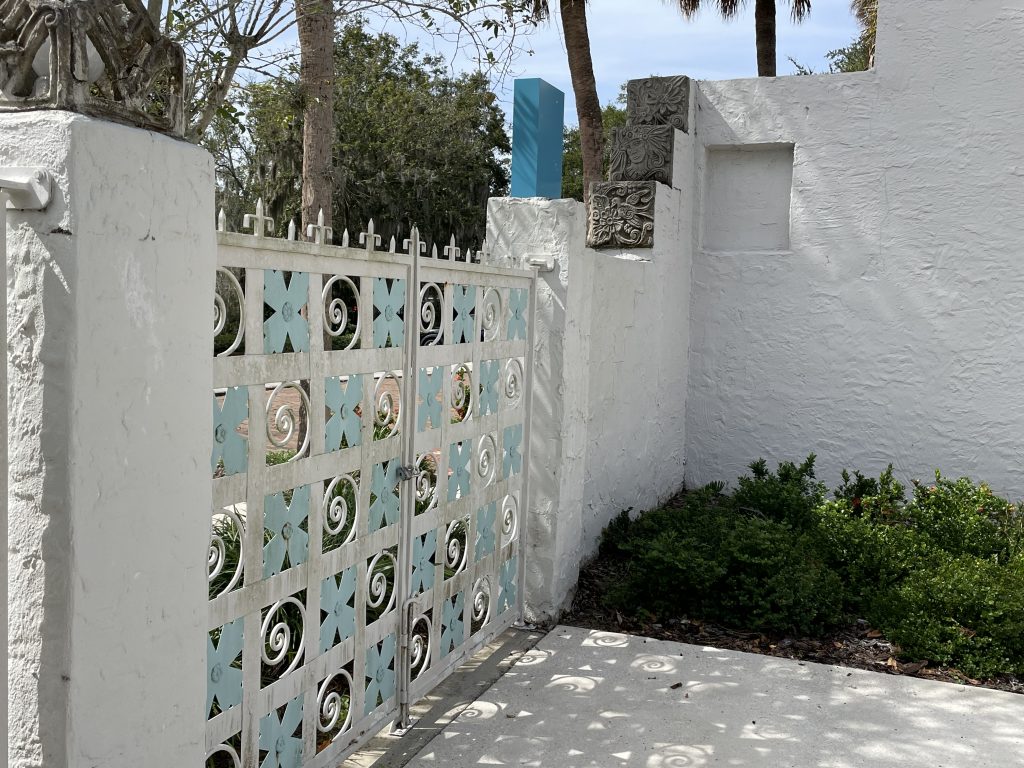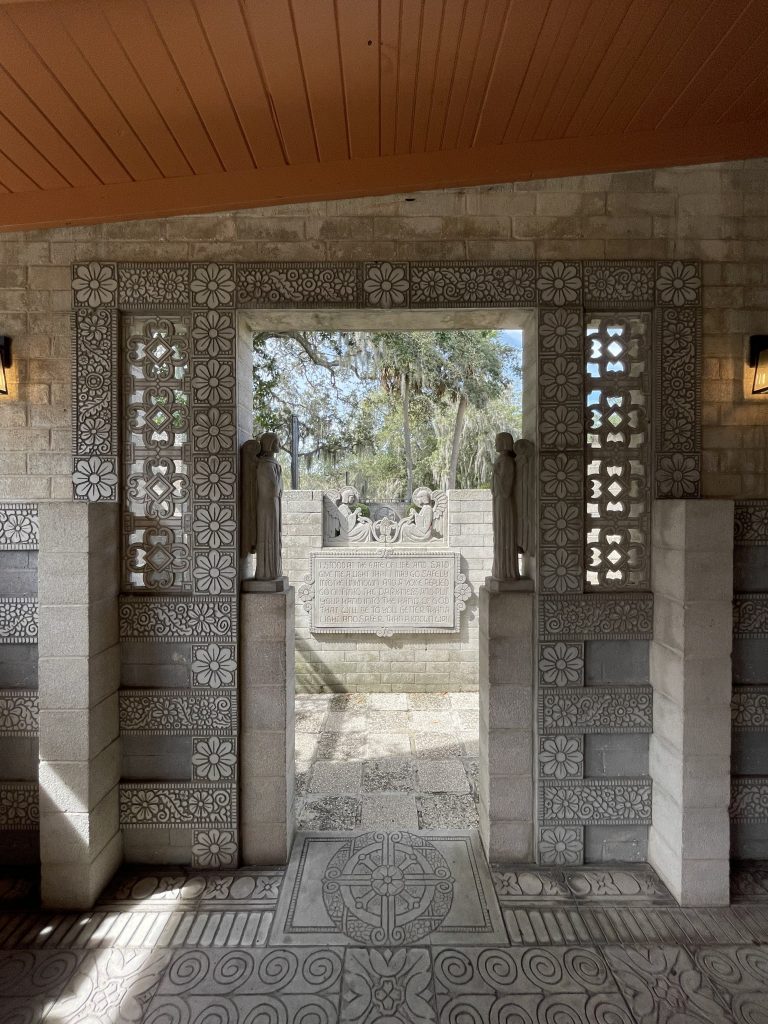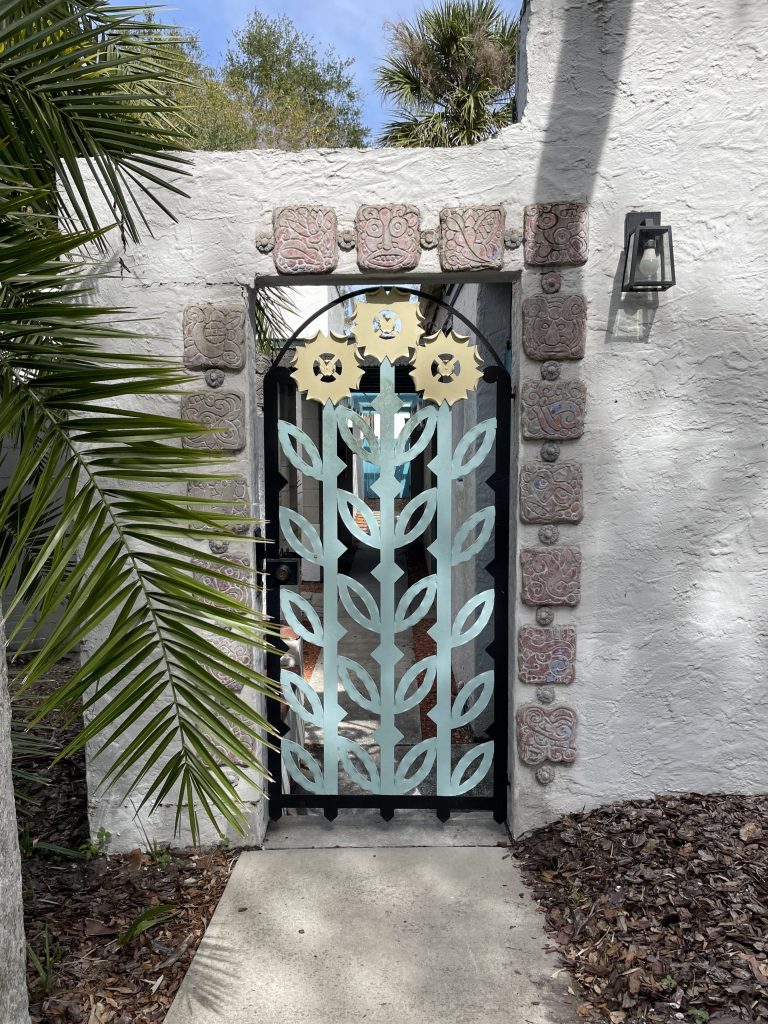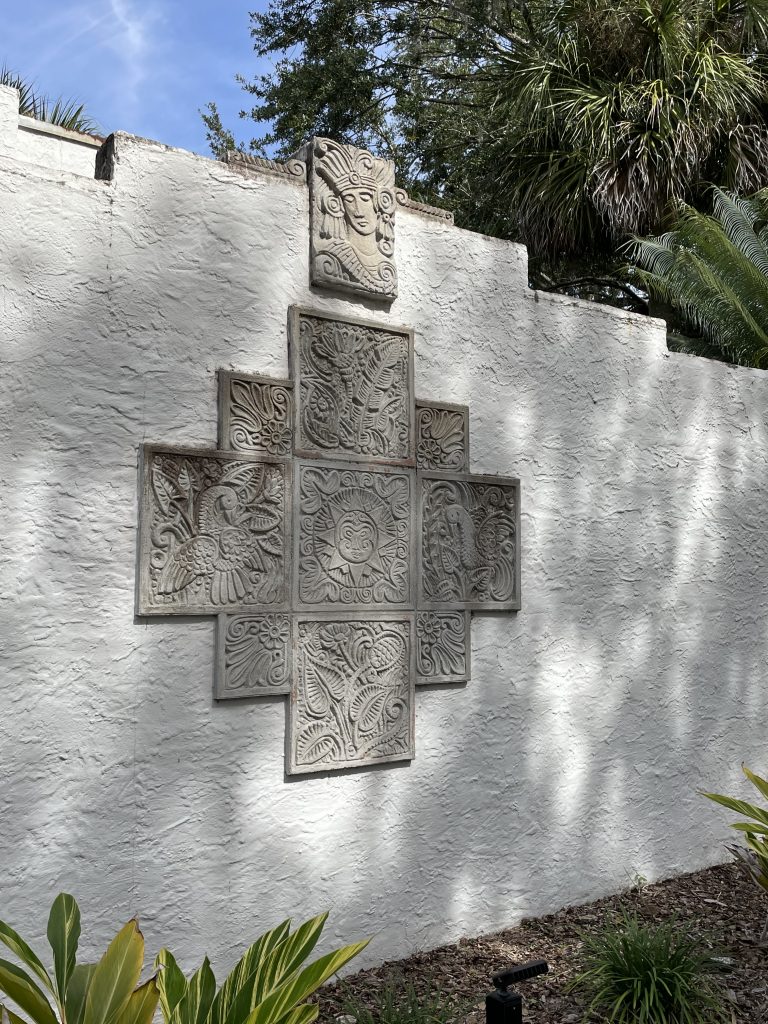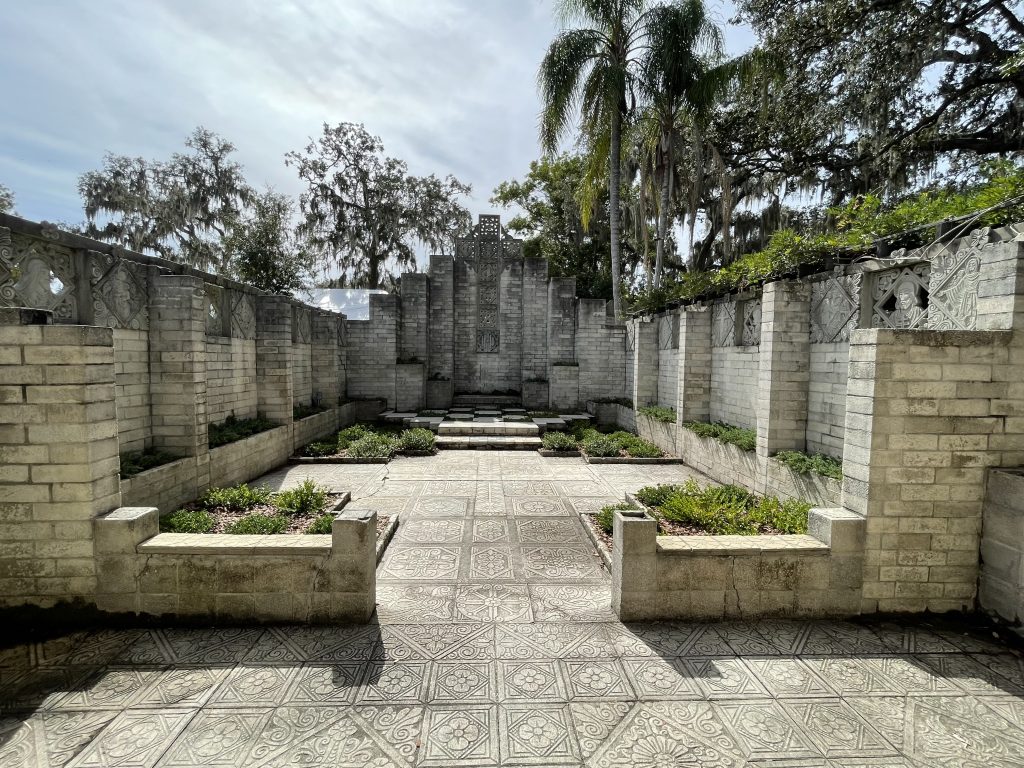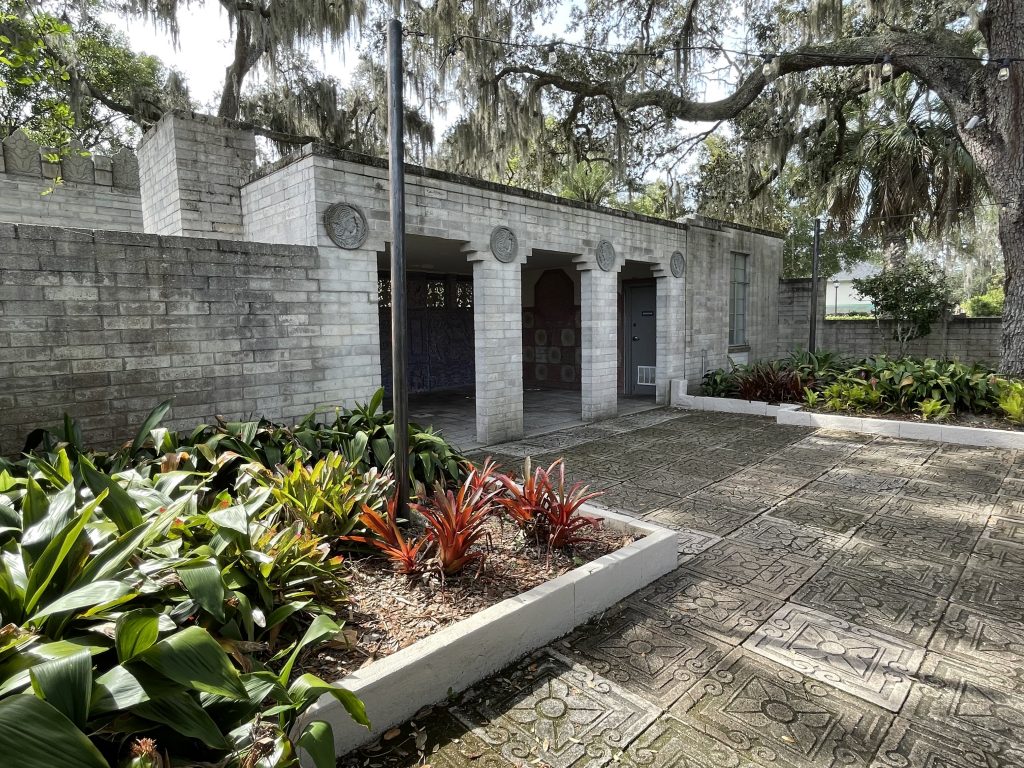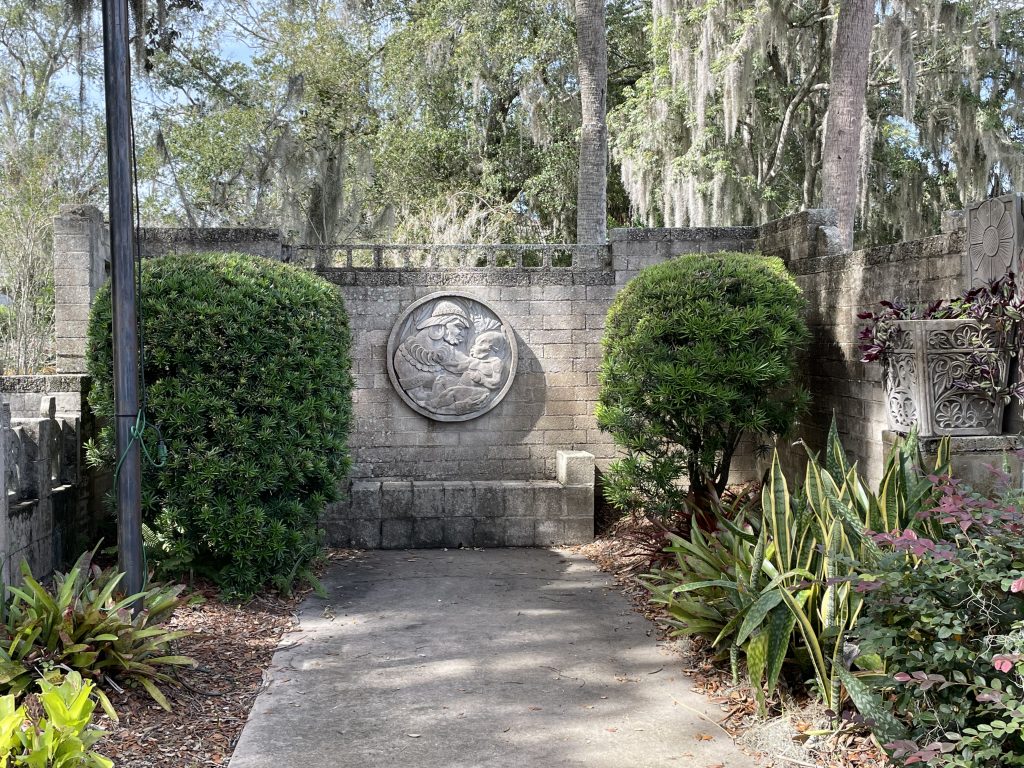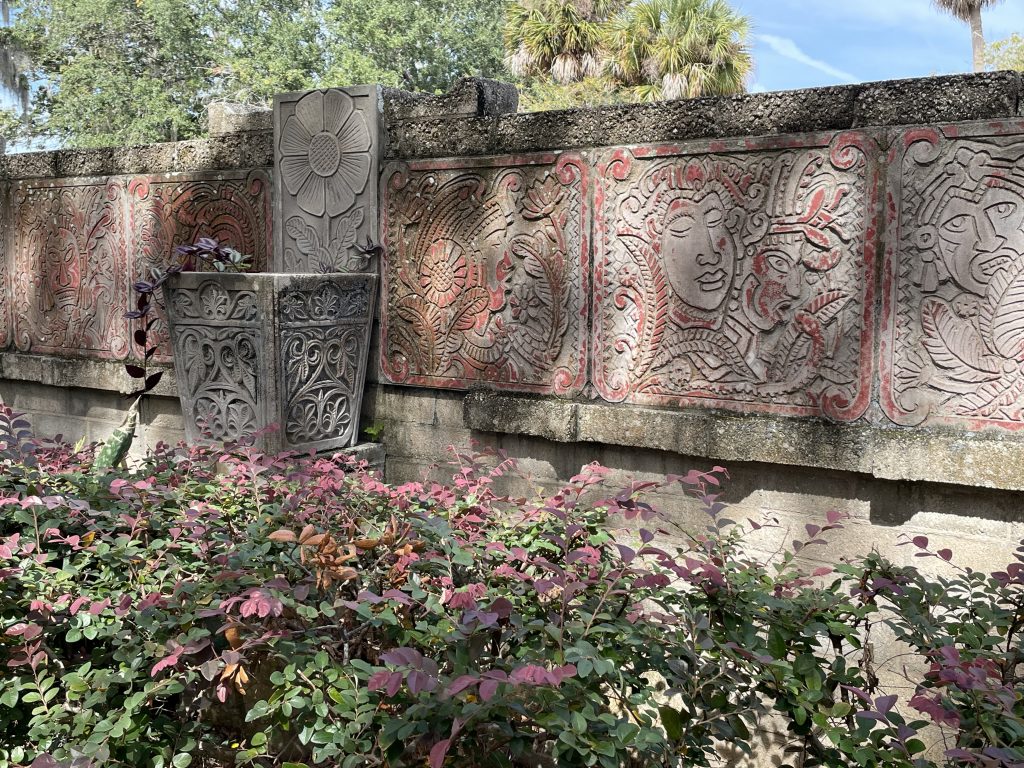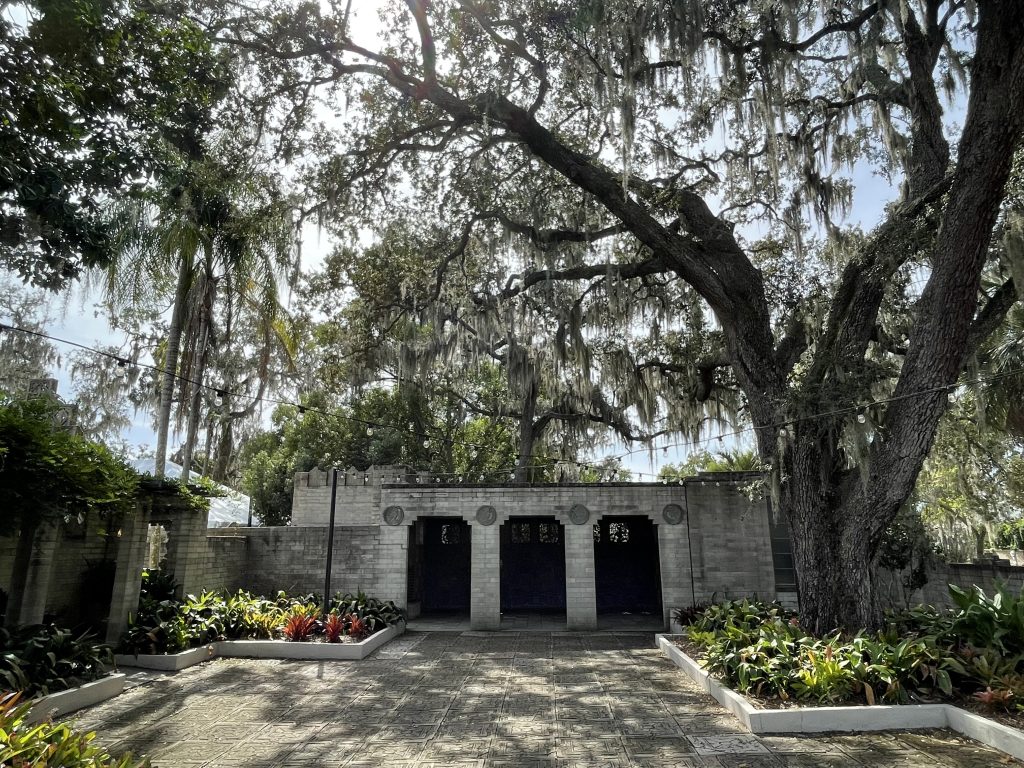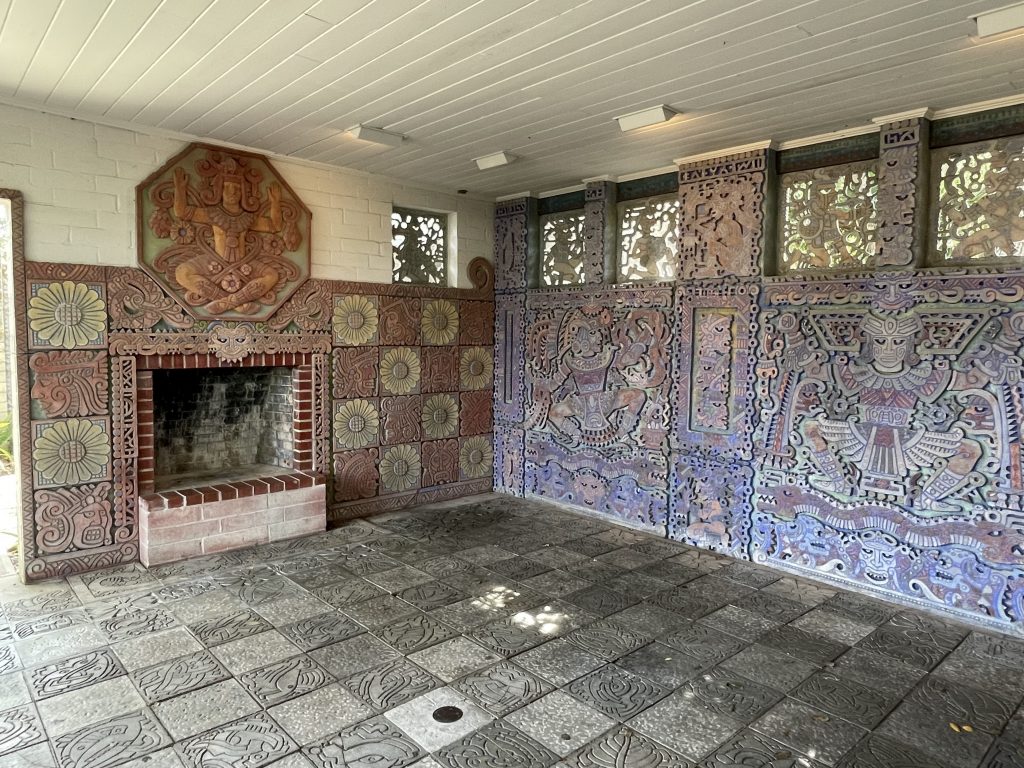I didn’t have high expectations for the Art & History Museums of Maitland, Florida, as it seemed an odd assortment of museums focusing on subjects that I wasn’t especially interested in.
But Doug had a good sense of the significance of the museum when he said he wanted to go, for it wasn’t the contents of the buildings that were of interest, but the beautiful buildings in which they were housed.
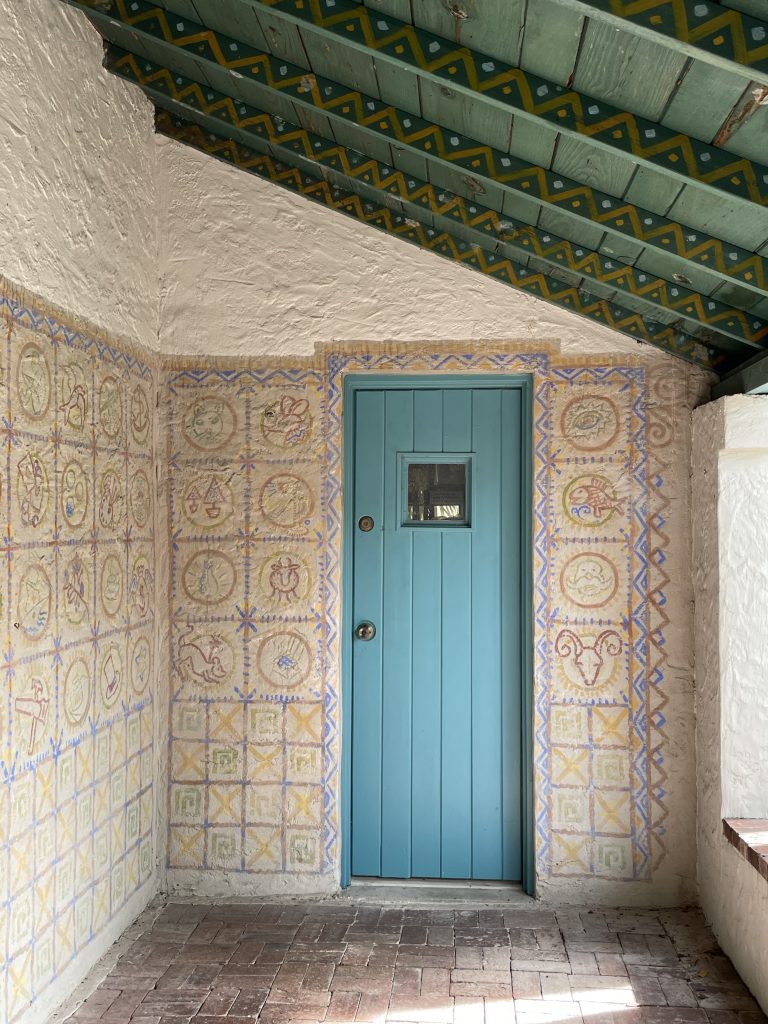
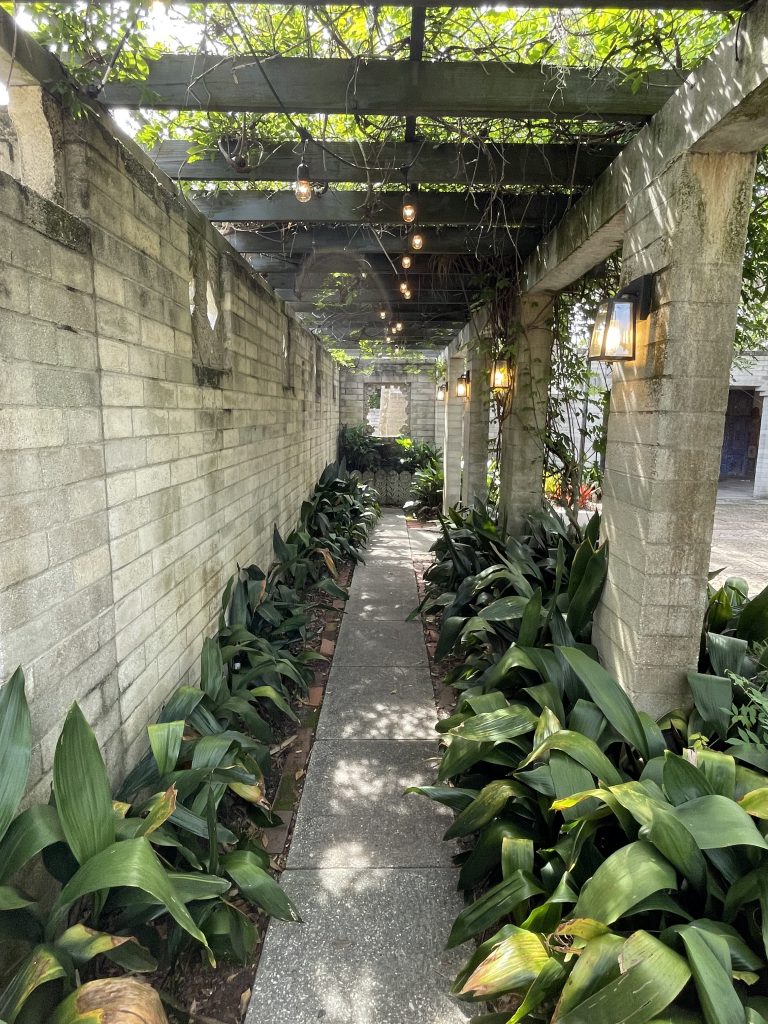
Formerly housed on the premises was the Research Studio, an art colony founded in 1937 by artist and architect André Smith (1880-1959). The buildings are covered by more than 2,500 carved and cast concrete sculptures, which were designed by Smith, and many hand-carved by him.
Smith was inspired by the cultures of ancient Mesoamerica, including the Aztecs and Maya societies. Elements of Christian and Asian iconography make their way in, as well.
The style is “Mayan Revival Architecture”, and this is the only remaining example in the Southeastern United States.
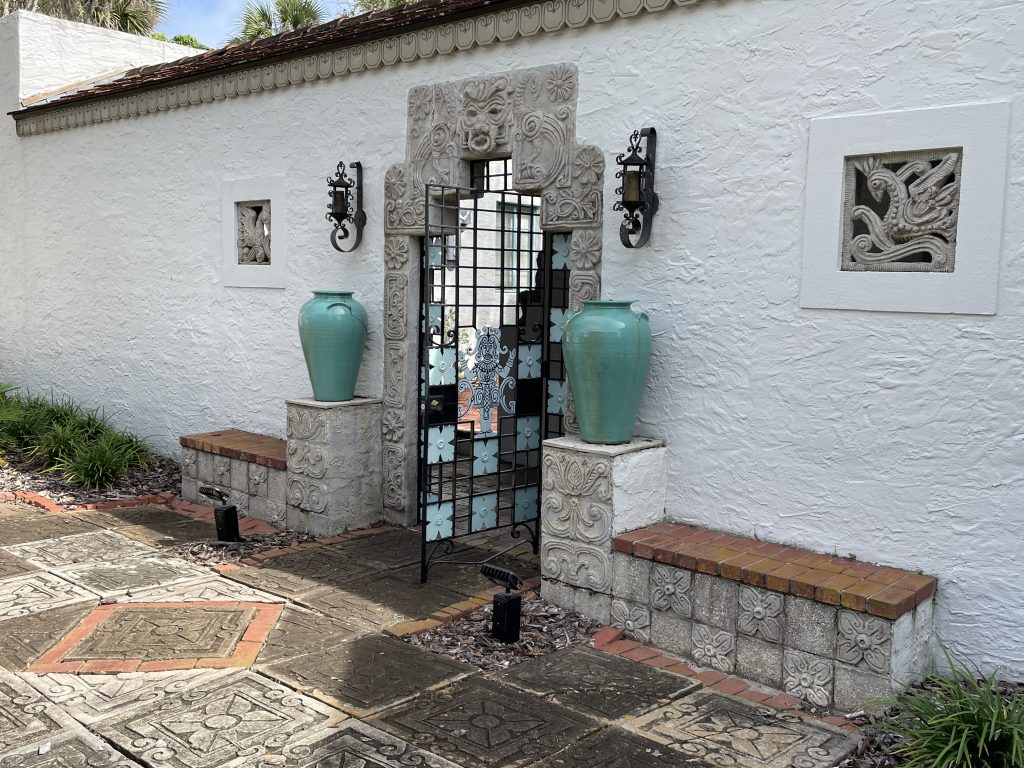
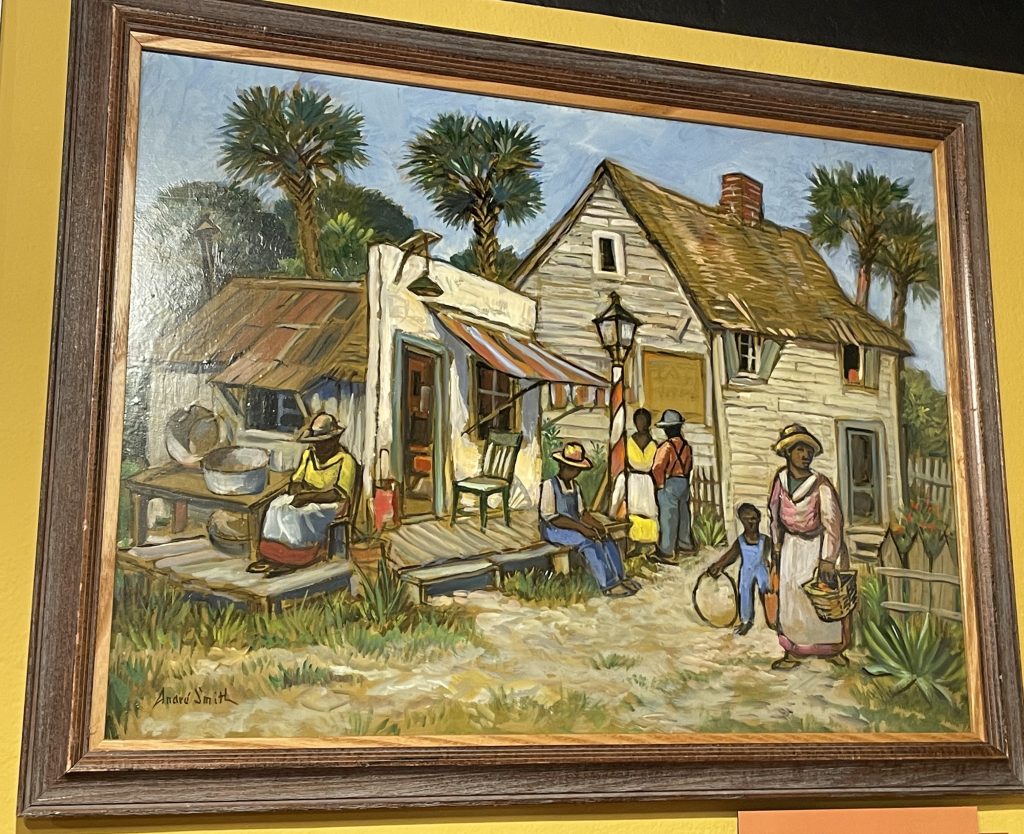
The museums on site were fine, but nothing to go out of your way for. They included a Maitland History Museum “documenting the life of a small town Florida”, per their website, with one especially interesting exhibit highlighting the connection between author Zora Neale Hurston and the nearby town of Eatonville, the first “all-black” town in the U.S. which was also a subject of Smith’s paintings.
In addition, the Waterhouse Residence Museum showcases a middle-class lifestyle in the 19th century; the Carpentry Shop Museum is a collection of antique woodworking tools; and the Telephone Museum, which was truly telephones on display–the rotary dial phones were truly very mysterious to some young kids who were visiting when we were there! There was also a contemporary photography exhibit on display.
We cruised through the museums pretty quickly, and spent a considerable amount of time on site admiring the buildings and walled garden areas.
The original art colony provided a place for artists to live while working and experimenting on their craft. Today the legacy continues with annual residency and studio programs.
